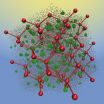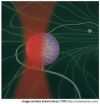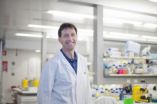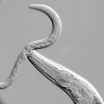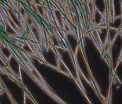(Press-News.org) A discovery about the way in which bugs spread throughout the body could help to develop stem cell treatments.
Researchers at the University of Edinburgh have found that bacteria are able to change the make-up of supporting cells within the nerve system, called Schwann cells, so that they take on the properties of stem cells.
Because stem cells can develop into any of the different cell types in the body – including liver and brain cells – mimicking this process could aid research into a range of degenerative conditions.
Scientists made the discovery studying bacteria that cause leprosy, which is an infectious neurodegenerative disease. The study, carried out in mice, found that in the early stages of infection, the bacteria were able to protect themselves from the body's immune system by hiding in Schwann cells or glial cells.
Once the infection was fully established, the bacteria were able to convert the Schwann cells to become like stem cells.
Like typical stem cells, these cells were pluripotent, meaning they could then become other cell types, for instance muscle cells. This enabled the bacteria to spread to tissues in the body.
The bacteria-generated stem cells also have another unexpected characteristic. They can secrete specialised proteins – called chemokines – that attract immune cells, which in turn pick up the bacteria and spread the infection.
Scientists believe these mechanisms, used by leprosy bacteria, could exist in other infectious diseases.
Knowledge of this newly discovered tactic used by bacteria to spread infection could help research to improve treatments and earlier diagnosis of infectious diseases.
The study is published in the journal Cell.
Professor Anura Rambukkana, of the Medical Research Council (MRC) Centre for Regenerative Medicine at the University of Edinburgh, who led the research, said: "Bacterial infections can completely change a cell's make up, which could have a wide-range of implications, including in stem cell research.
"We have found a new weapon in a bacteria's armoury that enables them to spread effectively in the body by converting infected cells to stem cells. Greater understanding of how this occurs could help research to diagnose bacterial infectious diseases, such as leprosy, much earlier."
The study, carried out in Professor Rambukkana's laboratories at the University of Edinburgh and the Rockefeller University, was funded by the US National Institutes of Health.
It showed that when an infected Schwann cell was reprogrammed to become like a stem cell, it lost the function of Schwann cells to protect nerve cells, which transmit signals to the brain. This led to nerves becoming damaged.
Professor Rambukkana added: "This is very intriguing as it is the first time that we have seen that functional adult tissue cells can be reprogrammed into stem cells by natural bacterial infection, which also does not carry the risk of creating tumorous cells.
"Potentially you could use the bacteria to change the flexibility of cells, turning them into stem cells and then use the standard antibiotics to kill the bacteria completely so that the cells could then be transplanted safely to tissue that has been damaged by degenerative disease."
Dr Rob Buckle, Head of Regenerative Medicine at the MRC, added: "This ground-breaking new research shows that bacteria are able to sneak under the radar of the immune system by hijacking a naturally occurring mechanism to 'reprogramme' cells to make them look and behave like stem cells. This discovery is important not just for our understanding and treatment of bacterial disease, but for the rapidly progressing field of regenerative medicine. In future, this knowledge may help scientists to improve the safety and utility of lab-produced pluripotent stem cells and help drive the development of new regenerative therapies for a range of human diseases, which are currently impossible to treat."
Professor Rambukkana, who is Chair of Regeneration Biology at the MRC Centre for Regenerative Medicine, is also a member of the University's Centre for Neuroregeneration and Centre for Infectious Diseases.
### Notes to editors
The grants from the US National Institutes of Health relate to National Institutes of Allergy and Infectious Diseases (NIAID) R01AI045816 and National Institute of Neurologic Disorders and Stroke R01 NS045187. The M. leprae bacterium which used in this study was provided by National Hansen's Disease Program which is supported by the NIAID through an Inter-Agency Agreement for production of M.leprae
Bacteria's hidden skill could pave way for stem cell treatments
A discovery about the way in which bugs spread throughout the body could help to develop stem cell treatments
2013-01-17
ELSE PRESS RELEASES FROM THIS DATE:
RUB researchers find over active enzyme in failing hearts
2013-01-17
A certain enzyme, the CaM kinase II, keeps the cardiac muscle flexible. By transferring phosphate groups to the giant protein titin, it relaxes the muscle cells. This is reported by researchers led by Prof. Dr. Wolfgang Linke of the Institute of Physiology at the Ruhr Universität in the journal Circulation Research. In failing hearts, which don't pump enough blood around the body, the scientists found an overly active CaM kinase II. "The phosphorylation of titin could be a new starting point for the treatment of heart failure" Prof. Linke speculates.
Titin phosphorylation ...
Soft Lego built in the computer
2013-01-17
In developing these novel self-assembling materials, postdoc Barbara Capone has focused on the design of organic and inorganic building blocks, which are robust and can be produced at large scale. Capone has put forward, together with her colleagues at the Universities of Vienna and Mainz, a completely new pathway for the construction of building blocks at the nanoscale.
"Soft Lego" orders in crystal structures
The team of researchers has shown that so-called block copolymer stars – that means polymers that consist of two different blocks and they are chemically ...
Vaginal delivery is the safest option for women with pelvic girdle pain
2013-01-17
Caesarean section increases the risk of persistent pelvic girdle pain after delivery compared with vaginal delivery, according to a new study from the Norwegian Institute of Public Health.
Caesarean section rates are increasing worldwide, and this trend has partly been explained by women's requests for planned caesarean section without a medical reason. Pregnancy-related pelvic girdle pain has been associated with increased preference for caesarean section and with increased planned caesarean section rates.
"Some women with severe pelvic girdle pain might fear that ...
A nano-gear in a nano-motor inside you
2013-01-17
To live is to move. You strike to swat that irritable mosquito, which skilfully evades the hand of death. How did that happen? Who moved your hand, and what saved the mosquito? Enter the Molecular Motors, nanoscale protein-machines in the muscles of your hand and wings of the mosquito. You need these motors to swat mosquitoes, blink your eyes, walk, eat, drink... just name it. Millions of motors tug as a team within your muscles, and you swat the mosquito. This is teamwork at its exquisite best.
Paradoxically, a weak and inefficient motor (called dynein) is the one that ...
A hidden treasure in the Large Magellanic Cloud
2013-01-17
Nearly 200 000 light-years from Earth, the Large Magellanic Cloud, a satellite galaxy of the Milky Way, floats in space, in a long and slow dance around our galaxy. Vast clouds of gas within it slowly collapse to form new stars. In turn, these light up the gas clouds in a riot of colours, visible in this image from the NASA/ESA Hubble Space Telescope.
The Large Magellanic Cloud (LMC) is ablaze with star-forming regions. From the Tarantula Nebula, the brightest stellar nursery in our cosmic neighbourhood, to LHA 120-N 11, part of which is featured in this Hubble image, ...
Potential new treatment for gastrointestinal cancers discovered
2013-01-17
Researchers have identified a complex of proteins that promotes the growth of some types of colon and gastric cancers, and shown that medications that block the function of this complex have the potential to be developed into a new treatment for these diseases.
The complex of proteins, known as mTorc1 (mammalian target of rapamycin complex 1), has previously been implicated in the development of some other cancers but this is the first time it has been shown to promote the growth of colon and gastric cancers that are associated with inflammation.
Dr Stefan Thiem and ...
Amputations among people with diabetes can be reduced by 50 percent
2013-01-17
Every 30 seconds somebody in the world is amputated as a consequence of foot complication due to diabetes. A new study at Sahlgrenska Academy, University of Gothenburg, Sweden, confirmes that shoe inserts, podiatry, regular checkups and other simple interventions can reduce the number of amputations by more than 50%.
Orthotic researchers at Sahlgrenska Academy, University of Gothenburg, have studied diabetic foot complications ever since 2008. They have focused on protecting the foot from overloading the foot sole in order to minimize the risk of ulcers, which may eventually ...
The neurobiological consequence of predating or grazing
2013-01-17
This press release is available in German.
Researchers in the group of Ralf Sommer at the Max Planck Institute for Developmental Biology in Tuebingen, Germany, have for the first time been able to identify neuronal correlates of behaviour by comparing maps of synaptic connectivity, or "connectomes", between two species with different behaviour. They compared the pharyngeal nervous systems of two nematodes, the bacterial feeding Caenorhabditis elegans and the predator/omnivore Pristionchus pacificus and found large differences in how the neurons are "wired" together.
A ...
Study offers new insights into the mechanics of muscle fatigue
2013-01-17
A study in The Journal of General Physiology examines the consequences of muscle activity with surprising results, indicating that the extracellular accumulation of potassium that occurs in working muscles is considerably higher than previously thought.
Muscle excitation involves the influx of sodium ions and efflux of potassium ions. Although the fraction of ions that cross the muscle membrane with each contraction is minute, repeated activity can lead to substantial changes in the intracellular and extracellular concentrations of sodium and potassium ions. The extent ...
Pediatric coding top tips and pediatric CPT changes 2013
2013-01-17
Cyanobacteria belong to the Earth's oldest organisms. They are still present today in oceans and waters and even in hot springs. By producing oxygen and evolving into multicellular forms, they played a key role in the emergence of organisms that breathe oxygen. This has, now, been demonstrated by a team of scientists under the supervision and instruction of evolutionary biologists from the University of Zurich. According to their studies, cyanobacteria developed multicellularity around one billion years earlier than eukaryotes – cells with one true nucleus. At almost the ...
LAST 30 PRESS RELEASES:
First Editorial of 2026: Resisting AI slop
Joint ground- and space-based observations reveal Saturn-mass rogue planet
Inheritable genetic variant offers protection against blood cancer risk and progression
Pigs settled Pacific islands alongside early human voyagers
A Coral reef’s daily pulse reshapes microbes in surrounding waters
EAST Tokamak experiments exceed plasma density limit, offering new approach to fusion ignition
Groundbreaking discovery reveals Africa’s oldest cremation pyre and complex ritual practices
First breathing ‘lung-on-chip’ developed using genetically identical cells
How people moved pigs across the Pacific
Interaction of climate change and human activity and its impact on plant diversity in Qinghai-Tibet plateau
From addressing uncertainty to national strategy: an interpretation of Professor Lim Siong Guan’s views
Clinical trials on AI language model use in digestive healthcare
Scientists improve robotic visual–inertial trajectory localization accuracy using cross-modal interaction and selection techniques
Correlation between cancer cachexia and immune-related adverse events in HCC
Human adipose tissue: a new source for functional organoids
Metro lines double as freight highways during off-peak hours, Beijing study shows
Biomedical functions and applications of nanomaterials in tumor diagnosis and treatment: perspectives from ophthalmic oncology
3D imaging unveils how passivation improves perovskite solar cell performance
Enriching framework Al sites in 8-membered rings of Cu-SSZ-39 zeolite to enhance low-temperature ammonia selective catalytic reduction performance
AI-powered RNA drug development: a new frontier in therapeutics
Decoupling the HOR enhancement on PtRu: Dynamically matching interfacial water to reaction coordinates
Sulfur isn’t poisonous when it synergistically acts with phosphine in olefins hydroformylation
URI researchers uncover molecular mechanisms behind speciation in corals
Chitin based carbon aerogel offers a cleaner way to store thermal energy
Tracing hidden sources of nitrate pollution in rapidly changing rural urban landscapes
Viruses on plastic pollution may quietly accelerate the spread of antibiotic resistance
Three UH Rainbow Babies & Children’s faculty elected to prestigious American Pediatric Society
Tunnel resilience models unveiled to aid post-earthquake recovery
Satellite communication systems: the future of 5G/6G connectivity
Space computing power networks: a new frontier for satellite technologies
[Press-News.org] Bacteria's hidden skill could pave way for stem cell treatmentsA discovery about the way in which bugs spread throughout the body could help to develop stem cell treatments
